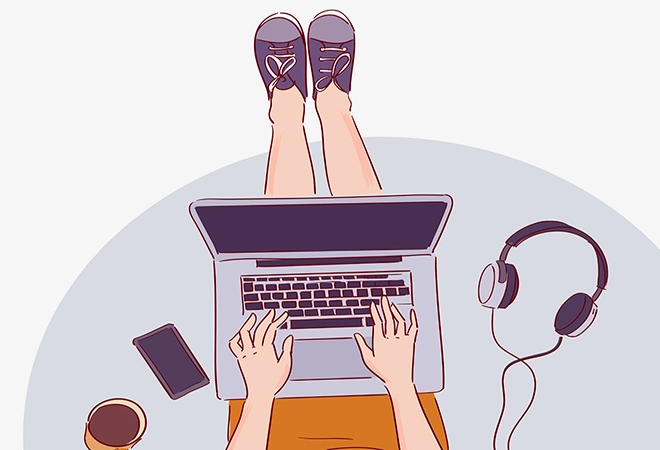Digital accessibility guarantees that all users can access digital information and services in the digital environment, regardless of their abilities or limitations. Only a small number of individuals, if any, utilize digital products and services in the same way. Some folks avoid them totally. Learning-disabled people may require less information than visually impaired people.
What is the Point of It All?
Digital accessibility is crucial for a variety of reasons. People with impairments now have better access to information and may learn how to use technology as a consequence. As a result, digital material and services might become more widely available. Advances in digital accessibility can assist people with a wide range of impairments. Impaired vision, hearing, and movement is examples of impairments.
Advantages of Being Accessible to a Large Number of People
Digital accessibility may assist those who are not impaired. For example, it may make it easier for the elderly to utilize various sorts of technology. Access to digital information and services may be more straightforward for non-native English speakers.
QualityLogic is one company that can assist you with internet access. When they arrive, they will test your program, identify any gaps, and assist you in polishing your material to make it more user-friendly for everyone. Another advantage is that it helps your brand flourish because you have more access to new possible clients!
Manufacturing of Useful Goods and Services
There are various advantages to having access to Internet-based information. It may allow firms to reach a bigger number of clients. You can reach a huge number of individuals who require assistance in accessing or using the digital products and services you provide. You may also distinguish yourself in your industry or work by doing something no one else does. As a consequence of this assistance and access, many people who were previously unable to make use of your company’s advantages may now be able to do so.
Developing Digital Content
Keep your information short and sweet. It may seem self-evident, yet it bears repeating. Speaking directly and simply while eliminating jargon is part of this. Make several copies of your content, such as audio and video, for clients that prefer or want access to it in a different format.
Take Advantage of Your Photographs and Videos
Images and videos are great methods to boost readability and interest in your material. However, with the correct application, accessibility difficulties can be reduced. Text explanations should accompany photographs and videos so that individuals who are unable to watch them understand what they are about. Ensure your pictures and videos have enough contrast to be seen by those with limited vision.
Consider Accessibility From the Beginning
A number of laws and regulations, most notably the Web Content Accessibility Guidelines (WCAG) 2.0, require digital accessibility. WCAG 2.0 is a set of recommendations and standards. A growing number of countries are implementing these policies and practices. It is vital to keep up with the latest modifications in order to guarantee that your products and services fulfill the standards.
Why is Digital Access Advantageous?
Disability is defined as “an umbrella word that covers impairments, activity limits, and participation restraints” by the World Health Organization. Problems with the body, senses, intellect, IQ, or personal conduct can cause disabilities. One billion individuals are expected to be afflicted, making it one of the most frequent medical conditions in the world. Despite this, finding a job and obtaining an education can be challenging for those with impairments.
Make sure that everyone has access to digital products and services to address these issues. This covers the creation of websites and applications for those who are blind or have low vision, deaf or have hearing loss, or have cognitive or intellectual disabilities. By making digital information and services more user-friendly, we can assist individuals with disabilities in overcoming some of the barriers they confront and living full, inclusive lives.
The Use of Digital Content by Disabled People
Access to digital information is problematic for people with various forms of disability. For the blind or visually challenged, text-to-audio conversion may be necessary. For deaf or hard-of-hearing persons to view or hear audio or video, captions or transcripts may be necessary. For persons with cognitive impairments, the material may need to be simplified. Individuals with physical constraints may also require additional input devices like switches or eye-gaze trackers to gain material access. Taking these diverse expectations into consideration, website designers and developers may build digital content that is more accessible to a wider audience.
When Designing, Keep the Blind in Mind
It is crucial to remember that dealing with digital information allows for only limited touch with the surroundings. Those who are blind or have weak eyesight, for example, need several clues to understand what is going on. As a result, while creating digital entertainment for youngsters, some safeguards must be taken. For example, every image should be accompanied by meaningful text alternatives. Video captions and audio explanations are also necessary. By following these rules, you can guarantee that everyone gets access to your digital information.
Designing With Deaf People in Mind
It is vital to consider the tastes of all possible viewers while generating digital content. Traditional information is usually difficult to understand for people with impairments. Closed captioning enables deaf or hard-of-hearing people to see digital information.
When developing digital content with closed captions, several issues must be addressed. Above all, the captions must be simple to read and comprehend. This includes using large letter sizes and avoiding hard-to-read typefaces. Audio and subtitles must be synchronized as well. This may be performed by either manually transcribing the audio track while utilizing software that automatically creates subtitles or manually producing the captions. The captions must be rigorously checked for mistakes.
You can develop digital material that anybody, regardless of handicap, may use if you follow these rules. Closed captions are one way to make the material more accessible. Audio description and sign language interpretation are also available. You might build digital information that everyone can use if you consider their needs.
Making Products For People With Limited Cognitive Capabilities
There are a few things to bear in mind while designing digital material for persons with cognitive issues. The most important thing to remember is that everyone is different and requires a different approach. There are, nevertheless, certain fundamental criteria that may be followed to make information more accessible.
For example, services for individuals with impairments argue for the use of simple language and imagery. This helps the reader to understand what is being conveyed more clearly. There must be several channels for debate and critique. Allowing pupils to connect with the material on their own terms guarantees that they comprehend and remember it. Designers may build worldwide accessible digital instructional content using these ideas.
Please visit www.qualitylogic.com if you believe QualityLogic can assist your firm in becoming more digitally accessible. Whether you need a few pointers or a brand-new website, their staff is here to help!


